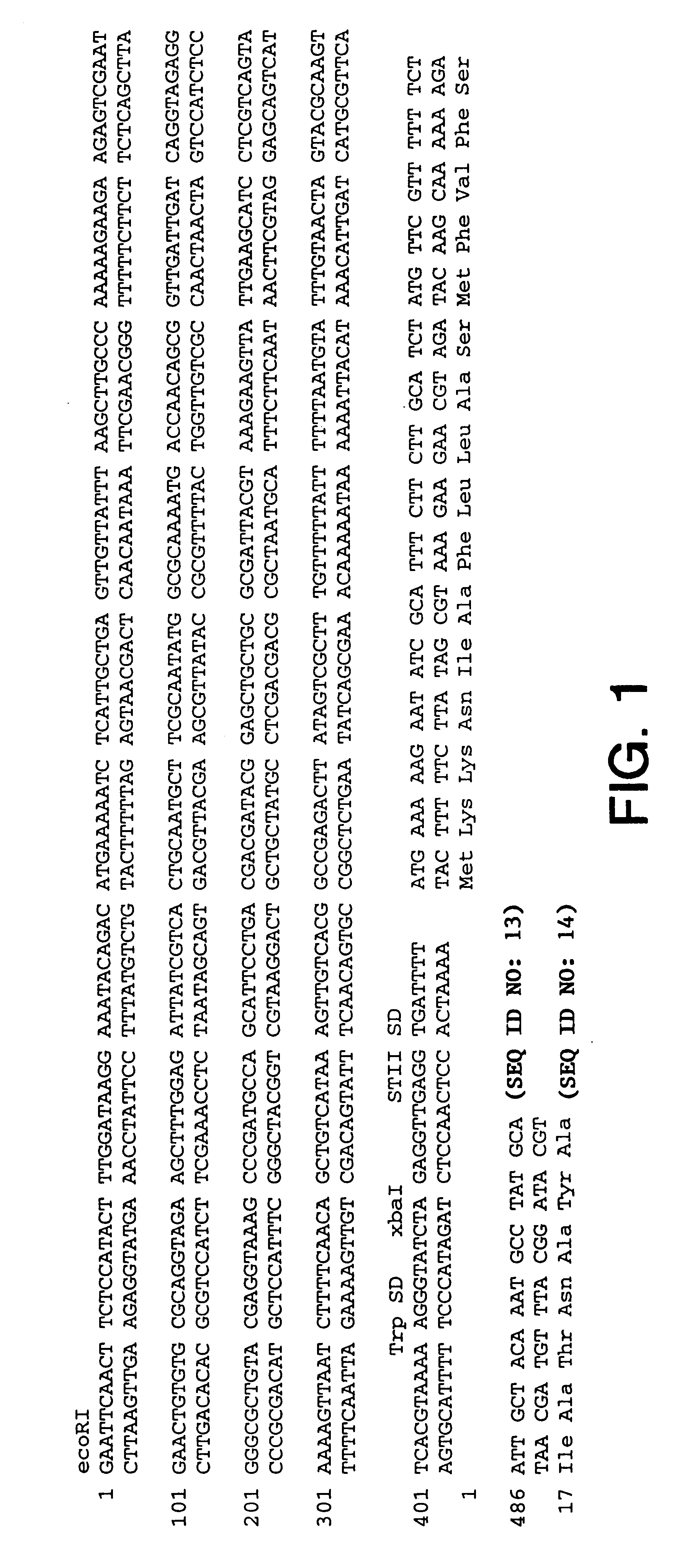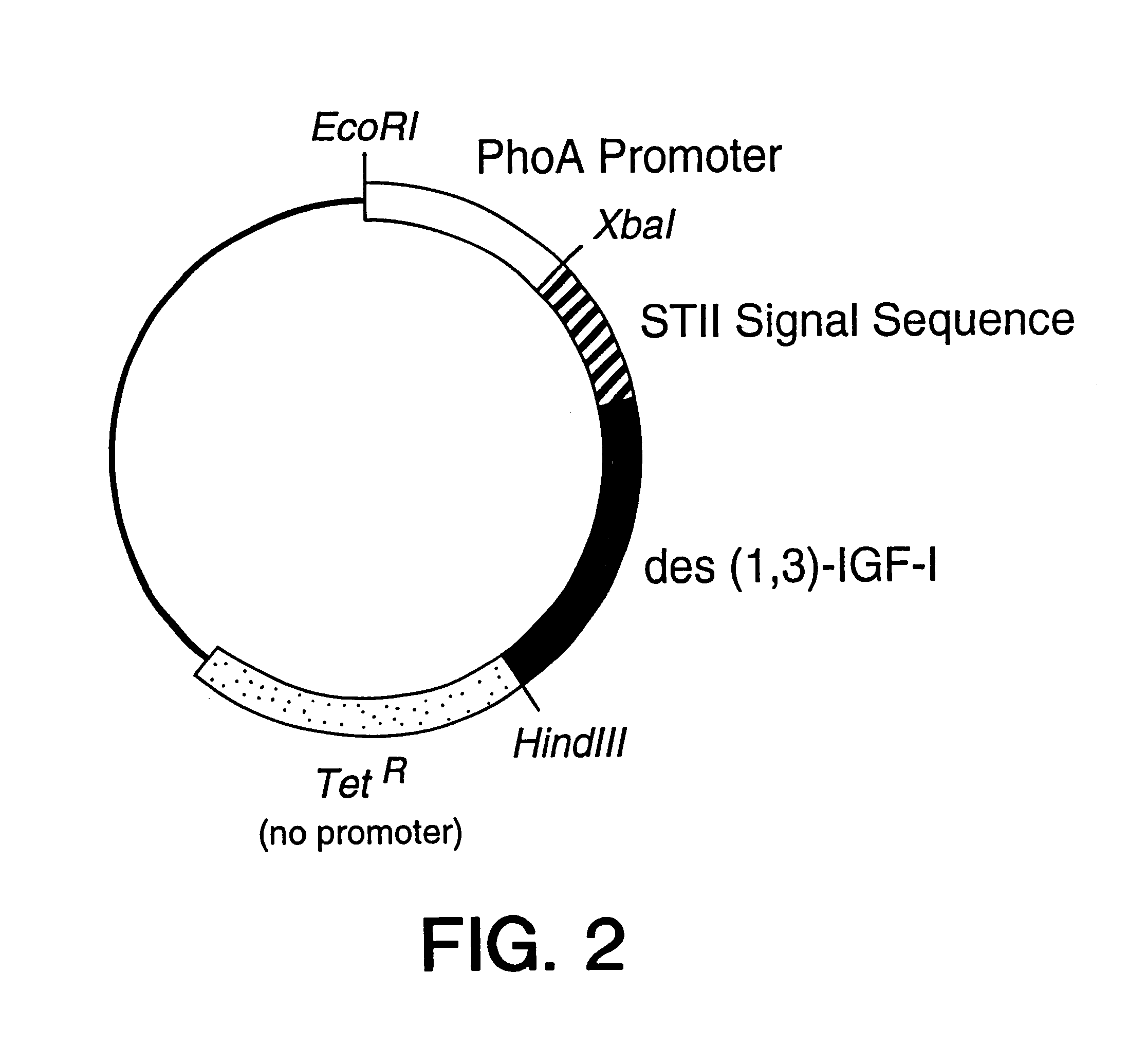Methods and compositions for secretion of heterologous polypeptides
- Summary
- Abstract
- Description
- Claims
- Application Information
AI Technical Summary
Problems solved by technology
Method used
Image
Examples
Embodiment Construction
I. Plasmid Constucts
A. Basic Plasmid Construction
All of the plasmids described in this patent application were constructed from a basic backbone of pBR322 (Sutcliffe, Cold Spring Harb Symp Quant Biol.43:77-90 (1978)). While the gene of interest expressed in each case varies, the transcriptional and translational sequences required for the expression of each gene were provided by the PhoA promoter and the Trp Shine-Dalgarno sequence (Chang et al., Gene55:189-196 (1987)). Additionally, in the cases noted, a second Shine-Dalgarno sequence, the STII Shine-Dalgarno sequence (Picken et al., Infect Immun42(1):269-275 (1983)), was also be present. Secretion of the polypeptide was directed by the STII signal sequence or variants thereof (Picken et al., Infect Immun42(1):269-275 (1983)). The PhoA promoter, Trp and STII Shine-Dalgarno sequences and the sequence of the wild-type STII signal sequence are given in FIG. 1.
B. Construction of pLS33
The plasmid pLS33 was derived from phGH1 (Chang et a...
PUM
| Property | Measurement | Unit |
|---|---|---|
| Fraction | aaaaa | aaaaa |
| Fraction | aaaaa | aaaaa |
| Fraction | aaaaa | aaaaa |
Abstract
Description
Claims
Application Information
 Login to View More
Login to View More - R&D
- Intellectual Property
- Life Sciences
- Materials
- Tech Scout
- Unparalleled Data Quality
- Higher Quality Content
- 60% Fewer Hallucinations
Browse by: Latest US Patents, China's latest patents, Technical Efficacy Thesaurus, Application Domain, Technology Topic, Popular Technical Reports.
© 2025 PatSnap. All rights reserved.Legal|Privacy policy|Modern Slavery Act Transparency Statement|Sitemap|About US| Contact US: help@patsnap.com



